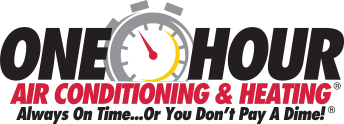
Achieving Optimal HVAC Performance in Open Concept Homes
Open-concept homes exude modern charm and openness, but achieving optimal HVAC performance can be tricky. How do you maintain consistent comfort in vast, interconnected spaces where air distribution is difficult? Standard HVAC systems often fall short, leading to uneven temperatures and inefficiency. Embracing advanced solutions such as zoning systems and smart thermostats is key.
These technologies intelligently manage airflow and temperature, ensuring balanced climate control throughout the home. With strategic optimization, you not only enhance comfort but also reduce energy consumption, making your open space both inviting and efficient.
Key HVAC Challenges in Open Concept Layouts
Open-concept layouts provide a seamless, spacious feel but present specific challenges for maintaining optimal HVAC performance. The absence of walls can disrupt airflow, creating hot and cold spots that make consistent temperature control difficult. To combat this, carefully positioned vents and air diffusers are essential, ensuring air is distributed effectively throughout the entire space.
Addressing Temperature Zoning Complexities
Open layouts complicate temperature zoning, as they lack the natural barriers that help HVAC systems regulate distinct areas. Different activities—cooking, dining, and lounging—may require varied temperatures simultaneously. Traditional HVAC setups struggle to adapt to these needs.
Advanced solutions, like zoned HVAC systems with smart thermostats and automated dampers, can help create microclimates within open spaces, enhancing comfort and energy efficiency.
Enhancing Energy Efficiency in Expansive Areas
Energy efficiency is a significant concern in open layouts, where HVAC units often run longer to maintain a stable temperature. This increased usage leads to higher energy consumption and potential wear on the system. To improve efficiency, homeowners can integrate high-performance insulation, energy-saving HVAC models, and programmable thermostats. These enhancements optimize performance while managing energy costs and extending equipment lifespan.
Managing HVAC Noise in Open Concepts
Noise is another consideration in open-concept spaces. The absence of walls can amplify HVAC sounds, disrupting the environment’s tranquility. Quieter HVAC models and strategic ductwork placement can mitigate this issue. Incorporating noise-dampening solutions, like soundproofing materials around ducts, ensures that optimal HVAC performance doesn’t come at the expense of peace.
Balancing Aesthetic Appeal with Functionality
Finally, maintaining the modern, uncluttered appearance of open spaces while integrating HVAC systems is challenging. Exposed vents or bulky units can detract from the design. Solutions such as recessed ceiling cassettes, concealed ductwork, or discreet floor vents provide effective climate control while preserving aesthetics. Collaboration with HVAC experts and designers ensures seamless integration of form and function, achieving optimal HVAC performance without visual compromise.
Top Strategies for Enhancing HVAC Performance
Achieving optimal HVAC performance in open concept homes requires targeted solutions to maintain even temperatures and reduce energy consumption.
-
Invest in Variable-Speed HVAC Systems
Unlike single-speed units, variable-speed systems adjust their output according to current conditions. This precise regulation helps evenly distribute temperature throughout expansive spaces, ensuring comfort without energy spikes. The adaptability of these systems supports balanced climate control and reduces energy use.
-
Adopt Zoning Techniques
Zoning divides the home into separate areas with individual thermostat control. This strategy is crucial for open layouts, allowing targeted heating or cooling only where necessary. By focusing energy on occupied zones, homeowners prevent wasted resources and minimize temperature fluctuations.
-
Leverage Smart and Programmable Thermostats
These advanced thermostats learn user habits and adjust settings automatically, optimizing HVAC performance with minimal effort. Scheduling temperature changes during off-peak hours, such as at night, enhances efficiency and keeps energy bills lower. Smart thermostats provide convenience and consistent climate management.
-
Enhance Insulation and Seal Ducts
Quality insulation retains conditioned air, crucial for large, open spaces. Properly sealed ducts prevent leaks that disrupt airflow and strain HVAC systems. Ensuring efficient air distribution supports system longevity and keeps energy consumption in check.
-
Prioritize Regular Maintenance and Filter Replacement
Routine maintenance identifies potential issues early, preventing costly repairs and inefficiencies. Regularly changing filters keeps air flowing smoothly, reduces system strain, and prolongs HVAC life. Well-maintained units deliver consistent performance and lower energy use.
These strategies help manage airflow, optimize energy usage, and provide even temperature control throughout open-concept homes, enhancing comfort and overall system performance.

Ductwork Considerations for Open Spaces
Optimizing ductwork design is critical for achieving optimal HVAC performance in open-concept homes. Properly designed and maintained ductwork ensures consistent air distribution, maximizing both comfort and energy efficiency.
Strategic Placement for Even Airflow
In open floor plans, duct placement greatly impacts temperature consistency. Positioning vents strategically across the space allows air to flow uniformly, preventing areas from becoming too warm or cold. Ceiling-mounted vents often work well in these layouts, using natural air movement patterns to support balanced distribution.
Sealing and Insulating Ducts
Leaky ducts are a common source of inefficiency, allowing conditioned air to escape before it reaches living areas. Sealing ductwork with professional-grade sealants and ensuring proper insulation prevents energy loss, enhancing HVAC performance and reducing utility costs. Insulation is particularly important when ducts pass through unconditioned spaces like attics or basements.
Appropriate Sizing for Efficiency
The size of the ductwork should align with the home’s HVAC requirements. Oversized ducts can reduce air pressure and lead to poor airflow, while undersized ducts can overburden the system, increasing energy consumption and wear. Consulting with HVAC professionals ensures ducts are sized to match system capacity, optimizing performance in open spaces.
Balancing Flexible and Rigid Ducts
Flexible ducts are easier to install and maneuver around complex layouts, but they can sag, impacting airflow. Rigid ducts, while harder to install, maintain shape better and often deliver superior airflow. Combining both types strategically can provide flexibility where needed and stability in key areas.
Thoughtful design, regular inspection, and proactive maintenance of ductwork are essential for sustaining optimal HVAC performance. These measures not only promote consistent temperatures throughout an open-concept home but also enhance overall energy efficiency and comfort.
Routine Maintenance for Optimal Performance
Consistent maintenance is essential for achieving optimal HVAC performance, especially in open-concept homes where maintaining uniform temperatures is crucial. Regular upkeep not only ensures system efficiency but also extends its lifespan and prevents unexpected breakdowns.
Prioritize Filter Replacement
Replacing air filters regularly is fundamental for optimal HVAC performance. Clogged filters restrict airflow, forcing the system to work harder and use more energy. Clean filters enhance air circulation, improve indoor air quality, and reduce strain on the system. It’s advisable to change filters every 1-3 months depending on usage and household conditions.
Schedule Professional Tune-Ups
Routine professional inspections help identify and address potential issues before they escalate into costly repairs. HVAC experts check critical components like fans, coils, and compressors, ensuring they function at peak efficiency. These regular assessments catch wear and tear early, maintaining consistent performance and preventing energy waste.
Clean Coils for Efficiency
Over time, dust and debris accumulate on both evaporator and condenser coils, reducing their ability to absorb or dissipate heat. Cleaning these coils boosts energy efficiency and ensures the HVAC system can maintain desired temperatures effectively.
Inspect and Seal Ducts
Leaky ducts can severely undermine system performance, leading to uneven temperature distribution and increased energy costs. Routine inspections to check for leaks and applying quality sealing materials help direct conditioned air to the intended spaces, maximizing system efficiency.
Calibrate Thermostats
An inaccurate thermostat can disrupt temperature consistency, leading to inefficiencies. Regularly checking and calibrating the thermostat ensures that it accurately reflects the home’s temperature and controls the HVAC system properly.
Adhering to these maintenance steps supports optimal HVAC performance, balancing energy use, enhancing comfort, and extending the system’s longevity. This proactive approach is key for any homeowner looking to keep their open-concept home comfortable year-round.
Seasonal HVAC Adjustments for November
With November’s cool air sweeping through Carrollton, TX, making strategic HVAC adjustments is key to maintaining optimal HVAC performance. Thoughtful preparation now ensures your home stays warm and energy-efficient during colder months.
Switching your HVAC system to heating mode early helps detect any potential issues before winter intensifies. A simple test run checks the thermostat’s responsiveness and overall heating efficiency. Clean or replace air filters to allow unobstructed airflow. Clogged filters strain your system, reducing optimal HVAC performance and causing uneven heating—especially critical in open-concept layouts.
Sealing drafts around windows and doors preserves warm air and supports consistent indoor temperatures. Proper attic insulation is another essential step; it prevents heat from escaping, allowing your HVAC system to maintain comfort without excessive energy use.
Ductwork inspections ensure air reaches all parts of your home without energy loss. Leaks or blockages in ducts can hinder optimal HVAC performance, leading to cold spots and higher energy bills. Regular sealing and maintenance keep ducts functioning efficiently.
Adjusting thermostat settings for energy efficiency—lowering them during sleep or when the house is empty—can lead to significant savings. Smart thermostats simplify this, learning your habits and automatically optimizing settings for comfort and efficiency.
Implementing these seasonal HVAC adjustments supports consistent warmth and reliable system performance, making your Carrollton home more comfortable and energy-friendly throughout the colder season.

The Impact of Smart Thermostats
Smart thermostats have redefined optimal HVAC performance, offering unmatched temperature control, energy efficiency, and user convenience. These intelligent devices go beyond simple adjustments; they learn user habits, adapt to daily routines, and fine-tune heating and cooling to enhance comfort. This automation reduces energy waste and ensures the HVAC system runs only when necessary, extending its lifespan.
Tailored Climate Control and Energy Savings
Unlike traditional thermostats, smart models provide customized temperature settings that cater to specific zones within open layouts or multi-use areas. This capability is essential for maintaining consistent comfort, especially in larger spaces. By analyzing room occupancy and external weather conditions, smart thermostats make real-time adjustments that promote optimal HVAC performance. This precision results in significant energy savings and lower utility bills without sacrificing comfort.
Proactive Maintenance and System Insights
Smart thermostats also offer a proactive approach to HVAC maintenance. They monitor system performance, alerting users to potential issues before they escalate into costly repairs. Whether it’s a filter change reminder or identifying irregularities, these notifications help maintain optimal HVAC performance over time.
The data insights provided empower homeowners to manage their system efficiently, ensuring reliable operation and a longer equipment life. Embracing this smart technology translates to better comfort, lower costs, and peace of mind.
Energy-Saving Tips Specific to Open-Concept Homes
Open concept homes are admired for their spacious, interconnected layouts, but they come with specific challenges in maintaining energy efficiency. For homeowners seeking optimal HVAC performance, targeted energy-saving strategies are essential.
Maximize Sunlight and Insulative Window Treatments
Embrace natural light to warm your home during colder months, minimizing reliance on your HVAC system. Strategic use of energy-efficient window treatments, such as thermal blinds or curtains, helps retain heat after sunset. This balance of light and insulation keeps your space comfortable without excessive energy use.
Incorporate Zoning for Targeted Comfort
A zoned HVAC system is invaluable in an open-concept home. It enables you to direct heating or cooling only to areas in active use, preventing unnecessary energy expenditure in less frequented zones. This strategic approach maintains consistent temperatures across wide spaces and ensures energy-efficient operation.
Optimize Air Circulation with Ceiling Fans
Ceiling fans play a crucial role in distributing air efficiently. In winter, set fans to rotate clockwise at a low speed to push warm air from the ceiling back down into the living space. This simple adjustment helps your HVAC system maintain optimal performance without increasing its workload.
Seal Drafts and Enhance Insulation
Open concept designs often mean more expansive exterior walls and higher ceilings, which can lead to drafts. Inspect and seal gaps around windows, doors, and other openings to prevent air leaks. Proper insulation, especially in attics and along external walls, helps retain heat or cool air, supporting your HVAC system’s effectiveness.
Manage Humidity Levels
Balancing indoor humidity can make a significant difference in comfort and energy use. Use dehumidifiers during humid periods to reduce the strain on your HVAC system and maintain optimal HVAC performance. Conversely, a humidifier during dry winter months helps the system work efficiently by preventing the air from feeling too cool and dry.
Install and Utilize Smart Thermostats
Smart thermostats are tailored for open-concept homes. They adjust settings automatically based on learned user habits, optimizing HVAC performance and reducing energy waste. With their ability to control temperatures based on occupancy, smart thermostats help maintain comfort across large spaces while minimizing energy use.
Adopting these energy-saving practices allows homeowners to enjoy the benefits of open-concept living without compromising on comfort or incurring high energy costs. Thoughtful adjustments to HVAC operation, paired with strategic home management, ensure your system runs efficiently and your home remains comfortable year-round.
Signs Your HVAC System Needs an Upgrade
Identifying when your HVAC system needs an upgrade is essential for maintaining optimal HVAC performance and ensuring comfort. Here are clear indicators that it’s time for a new system:
-
Frequent Breakdowns
If your HVAC unit requires constant repairs, it may be nearing the end of its lifecycle. These repetitive issues not only disrupt comfort but also lead to mounting repair costs that could be better invested in a new, energy-efficient system.
-
Uneven Heating and Cooling
Open-concept homes highlight inefficiencies in older HVAC systems. If you experience hot or cold spots despite regular maintenance, your current system may be struggling to distribute air evenly. Newer models provide improved airflow technology that maintains consistent temperatures across expansive spaces.
-
Rising Energy Bills
An unexplained increase in your energy bills often signals reduced system efficiency. As HVAC units age, they tend to consume more energy to deliver the same output. Upgrading to a modern, high-efficiency system can significantly cut energy costs and boost performance.
-
Outdated System Age
Most HVAC systems are designed to last 10-15 years. If yours is older, it’s likely operating inefficiently and prone to failure. Upgrading to a system with advanced features, such as variable-speed technology, ensures optimal HVAC performance and better control over energy use.
-
Excessive Noise and Reduced Air Quality
If your system is making unusual noises or fails to keep indoor air clean, it may be due to worn-out parts. Modern HVAC systems run more quietly and offer advanced filtration, improving air quality and comfort.
Upgrading at the right time enhances reliability, cuts energy costs, and ensures your home remains comfortable year-round.
Ensure year-round comfort and energy efficiency with optimal HVAC performance. Trust One Hour Air Conditioning & Heating of Dallas for expert care and reliable solutions. Contact us today and experience the difference.
FAQs About Optimal HVAC Performance
-
How can I tell if my HVAC system needs an upgrade?
Frequent repairs, rising energy costs, and uneven temperatures can signal it’s time for an upgrade. Older systems often struggle with maintaining optimal HVAC performance, especially if they are over 10-15 years old, leading to inefficiencies and higher energy use.
-
What benefits can I expect from upgrading my HVAC system?
Upgrading your system can improve energy efficiency, lower utility bills, and ensure consistent comfort throughout your home. Modern systems are equipped with variable-speed technology and smart thermostats that support optimal HVAC performance by adjusting to your home’s needs, boosting efficiency, and maintaining even temperatures.
-
How often should I schedule HVAC maintenance?
Regular maintenance is crucial for achieving optimal HVAC performance. It’s recommended to schedule professional checkups twice a year—before the heating and cooling seasons—to ensure the system runs efficiently and any potential issues are addressed early.
-
Will upgrading my HVAC system reduce my energy bills?
Yes, new HVAC systems are designed with energy-saving features that optimize performance and lower energy use. Advanced technologies like variable-speed compressors and automated smart controls enable the system to operate efficiently, cutting down on energy costs.
-
What features are essential for optimal HVAC performance in a new system?
Look for systems with high SEER ratings, variable-speed motors, and smart thermostat compatibility. These features ensure energy efficiency, effective temperature control, and reliable, year-round comfort while supporting optimal HVAC performance throughout your home.







